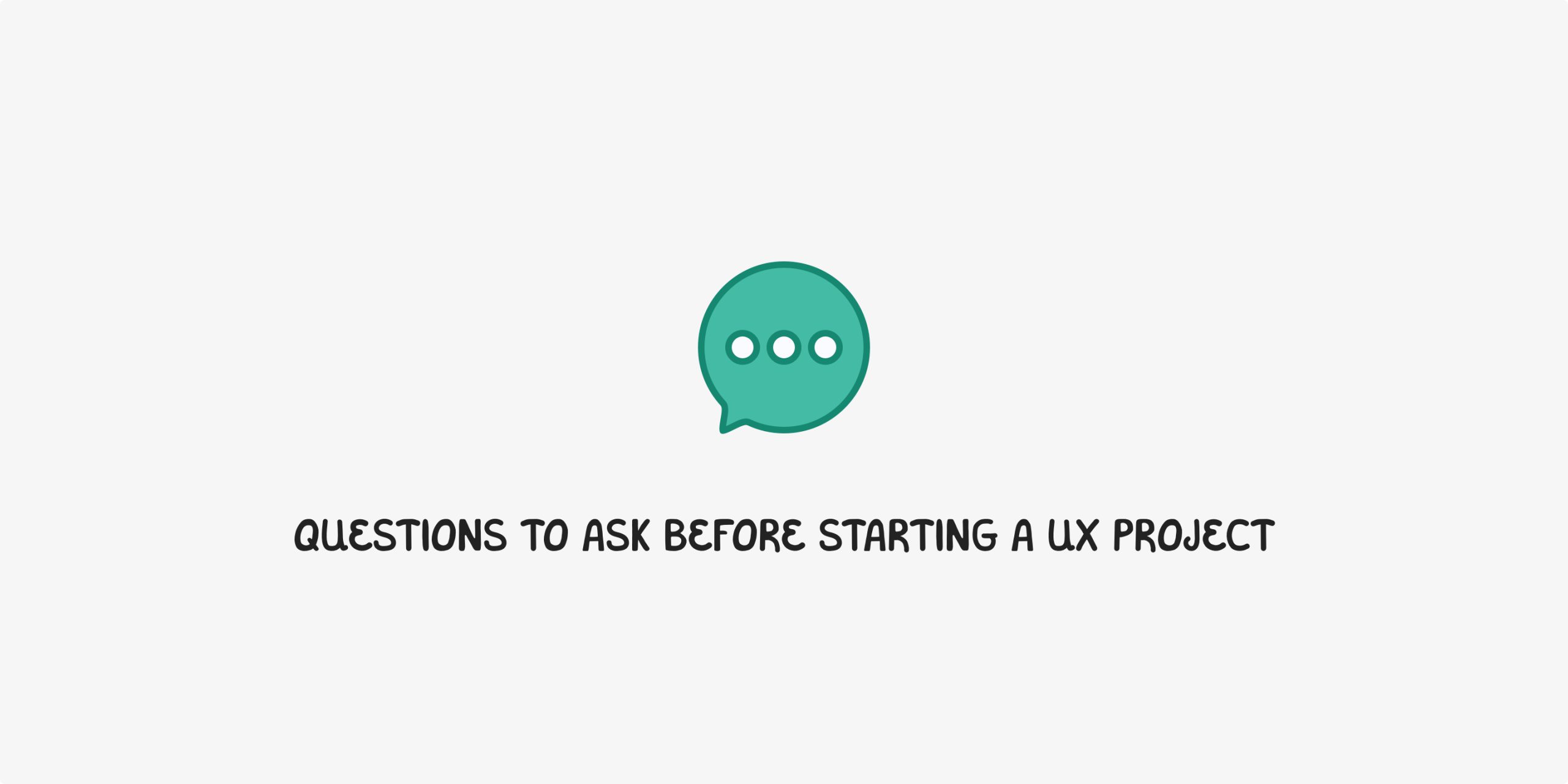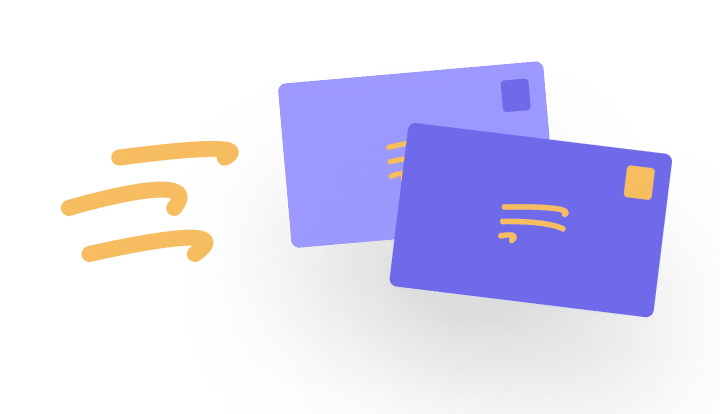Are you about to start a UX project, and do you still have questions? That’s great! In fact, you should have some questions. Asking the right question helps you break down the project. You’ll have a better view of what to expect. Here’s a list of questions to ask before starting a UX project and why these questions are important.
- Updated on November 5, 2022

Asking the right questions is all about starting a project the right way. That will get you and your users the best possible result. It is also about having the least amount of potential project risks.
The single most considerable risk to your UX project at this stage is a misalignment between what you expect of the project and what your stakeholders expect of you. Trust me. It happened to me just recently.
Such a misalignment can result in you stopping your UX research methods, designing based on assumptions, and your stakeholders having an overall lousy taste and view on UX. Especially that final one can result in long-term problems for our status as user experience professionals.
Table of Contents
Questions to ask before starting a UX project
Before you start your UX project, you must ask many questions to prevent such a misalignment from happening. That’s your main goal. Most commonly, you ask your main stakeholder or potential client these questions during a project intake or kick-off.
Let’s list a few example questions to ask before starting a UX project.
What do you expect from UX for this project?
UX is what they call an umbrella term. It covers many job roles ranging from UI design to UX research. The result is a lot of people with just as many views on UX and its importance.
This diverse set of views on UX means that no UX project will ever be the same. Some of your stakeholders will expect you to do a full design thinking UX project. Your next project might have stakeholders that require you to design only the interface of their product. And yet, even this isn’t as simple as it sounds. Designing the interface could be just the UI, for example. In other cases, you’re expected to also validate your UI design work by conducting user tests.
As you see, the expectations your clients have can differ. Therefore, to ensure a successful project, a useful design, and a satisfied client, you must discuss your clients’ expectations of what you will deliver as a UX designer.
But, how to do it? First, you can have an open discussion and ask your stakeholders. That’s not all, though. Maybe your stakeholder doesn’t know the full value you can bring. Then, it is up to you to sell UX to your stakeholders. Asking questions to determine what’s expected of you are excellent conversation starters during a UX project kick-off meeting.
Who is going to develop the project?
This is a crucial question to ask before starting your UX project. Why? Someone has to develop your designs to become live products and services. This developer has a way of working as well as some restrictions and requirements he has to follow.

These requirements will require you to do work in a way that suits the overall process. For example, I’ve done projects where the developer needed every screen design of every step for all sizes. Lots of work! In other projects, some templates and a design system foundation were enough. The first one will take a big chunk out of your project time, while the other one gives you more room to do additional work within your UX project.
You need to know what to deliver based on stakeholder and developer requirements. Then, you can create your project planning and get to work. In other words, another essential question to ask before you start your UX project.
What are other parties involved?
The career of UX is a social one. Your projects will require you to interact with many people in different roles. Involving these roles is essential to doing a good UX project. Before starting your UX project, make sure you know if the following roles have been onboarded.
- Product owner. This is an important one. The product owner helps you prioritize backlog items and manage stakeholders. Not having a product owner available would have been a no-go for the project for many of my clients.
- The development team. I wrote about this above. You need to know what the development team needs to build the product. You can base a project planning on these requirements.
There are more roles than the two I mention above. Working with a business analyst or marketing specialist is also required for some clients. In addition to asking about the PO and development team, you can also ask for other required parties in general.
Is there user research available?
Finally, a question about available user research. Answering this question will help you better plan your UX project. In addition, you can use research that has been done before to your advantage. Here’s how.
Let’s say you have three months to do your UX work. If there’s one month’s worth of user research available, you will have your entire project to focus on ideating and designing. However, if you have to start from scratch, you will only have two months to ideate and design. Being able to use existing work is, therefore, a considerable time saver.
By the way, the user research I’m mentioning here can be data-driven as well. That would be even better. Anything that can help you do a better job and save you some time is a win in my book.
For one of my projects, user data was available through a survey at the end of the current user flow. In addition, I also got access to a Google Analytics dashboard to see conversion data. This data was of great value to me and the UX project. It has helped me get a high-level view of user pain points and needs. It has been a huge time saver, and that’s why it is essential to ask this question.
How to answer questions before you start a UX project
There’s a lot to ask before a UX project starts. The questions above are some of the most important ones I have used (or wish I had used) for many of my projects. But how and when would you ask these questions? One of the best ways to do this is by organizing a project kick-off meeting.
During this meeting, people in different roles can introduce themselves, speak about what they expect from the project, and how you can best work together. You can ask all questions you have here. My pro tip here is to schedule regular update calls where you discuss new insights and issues you may have uncovered.
In theory, the product owner will facilitate this meeting. However, be aware that this isn’t always the case. You can facilitate the kick-off meeting if this happens. As a UX designer, you’re a skilled facilitator, after all.
Questions not to ask (yet)
Let’s review some questions you shouldn’t ask before starting your UX project. Knowing what to ask is just as important as knowing what not to ask yet. Remember that your goal is to clarify the project scope. You have to draw lines and not yet color between those lines to do this. You do not have to solve problems and ‘do’ the project at this point. Many designers want to start doing that right away. That includes me, by the way.
Try and avoid (UI) design-related questions that focus on components.
- Should we use a dropdown or a radio button list here?
- Can we skip these text fields in the second form on page one?
Even important user-focussed questions should be asked at a later time. Yes, it is important to know your target audience, how to reach them, and what their needs are. However, the people you talk to before starting your project hardly ever know the answers to this type of question.
Don’t get me wrong. These questions are important, but for a later time. Once you know the scope, you can apply your UX skills to answer the questions above during the UX project.
Further reading
That’s it for the questions you should ask before starting a UX project. I’ve mentioned some examples, why these questions are essential, and how to ask them. I’m sure your project will be off to a flying start if you apply these questions.
Up next is the actual project for which you need several different skills. Other issues might arise as well. For this, I’ve written many UX-related posts. Check out my post on how to learn UX to get started.

About the author
Hi! I'm Nick Groeneveld, a senior designer from the Netherlands with experience in UX, visual design, and research. I'm a UX coach that supports other designers and have completed design projects in finance, tech, and the public sector.
☎️ Book a 1:1 mentor meeting or let's connect on LinkedIn and Twitter.



